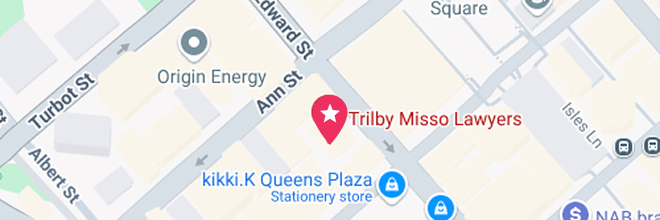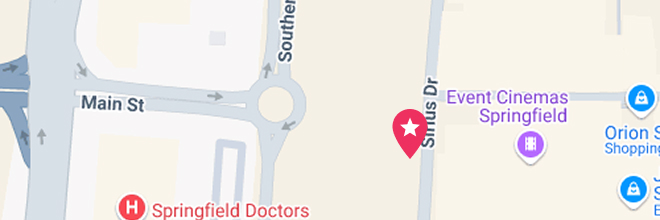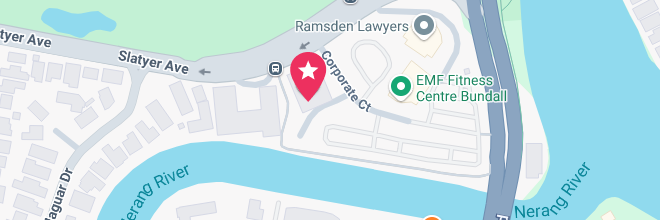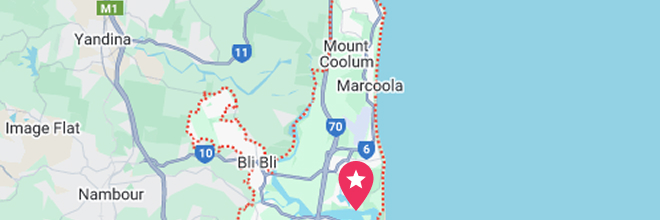Table of Contents
- Trilby Misso: A capable personal injury lawyer in Brisbane
- Why choose Trilby Misso as your personal injury lawyer in Brisbane?
- Brisbane’s key features
- Brisbane’s demographics
- Brisbane’s historical background
- Brisbane’s key attractions
- Brisbane’s micro-economy
- Education and healthcare in Brisbane
- Links for further reading
Visit Our Brisbane CBD Office
- Suite 400, Level 4/288 Edward St, Brisbane City QLD 4000
- Monday-Friday 8:30am to 5pm
- (07) 3910 5470
 Brisbane’s key features
Brisbane’s key features
Brisbane’s central business district (CBD) is situated within a bend of the Brisbane River, offering both urban conveniences and access to natural attractions. The CBD is characterised by a grid layout, with streets named after members of the House of Hanover. Queen Street, honouring Queen Victoria, serves as the main thoroughfare and features the prominent Queen Street Mall.
A notable geographical feature of the CBD is its location along the Brisbane River, which meanders through the city, shaping its landscape and supporting local ecosystems. Historically, the river has been essential for transportation and trade. Today, it is central to recreational activities, with numerous parks and walking trails along its banks, making it a popular spot for fishing, boating, and picnicking.
The CBD is home to several significant parks that highlight the area’s environmental diversity. The City Botanic Gardens, located at Gardens Point, is renowned for its collection of cycads, palms, figs, and bamboo. Visitors can explore various walking paths and enjoy the scenic beauty of the gardens.
Another key feature is the Roma Street Parkland, a 16-hectare space that has been transformed into designer gardens and sprawling lawns. The parkland provides habitats for various bird species and other wildlife, making it a favourite location for birdwatchers and nature enthusiasts. The walking tracks allow visitors to immerse themselves in the natural environment, observing the park’s ecosystem up close.
Brisbane’s climate is characterised by a subtropical environment, with warm, humid summers and mild, dry winters. This climate supports a diverse range of plant life, contributing to the lush landscapes found in many of the CBD’s parks and natural areas. The region’s weather patterns make it ideal for outdoor activities year-round, further enhancing its appeal as a place to live or visit.
Environmental factors have also influenced the development of the CBD. The Brisbane River has historically supported transportation and trade, while the surrounding natural areas have become central to the community’s identity and lifestyle. The city’s commitment to preserving these natural spaces, while accommodating growth, ensures that Brisbane remains a place where nature and urban development coexist harmoniously.
 Brisbane’s demographics
Brisbane’s demographics
Brisbane CBD is a thriving urban centre with a diverse population that reflects the multicultural character of Australia. As of the latest data, Brisbane has a population of over 2.5 million people, with the inner city and CBD serving as a key commercial and residential hub. The city has experienced steady population growth, driven by its economic opportunities, lifestyle appeal, and strong infrastructure.
One of the defining features of Brisbane’s demographic profile is its cultural diversity. The city is home to residents from over 200 different nationalities, contributing to a vibrant mix of cultures, languages, and traditions. This diversity is showcased through various cultural festivals and events held throughout the year, such as the Brisbane Multicultural Festival and Paniyiri Greek Festival. Brisbane’s residents speak more than 220 languages, with significant communities of Chinese, Indian, Vietnamese, and African backgrounds, among others. This multicultural environment fosters inclusivity and a globally connected community.
Brisbane’s CBD is known for its dynamic yet welcoming atmosphere. The city’s residents and workers enjoy a balance of urban convenience and community engagement, with many events, local markets, and social spaces fostering interaction. The area is also home to an array of community organisations and business networks that contribute to a sense of connection and support.
The lifestyle in Brisbane CBD is shaped by its riverfront location and green spaces. Many residents and visitors take advantage of the City Botanic Gardens, South Bank Parklands, and the Brisbane Riverwalk for outdoor activities and relaxation. Most of these features are managed by the Brisbane City Council. The combination of cultural diversity, active community life, and access to nature makes Brisbane CBD a highly attractive place to live, work, and visit, offering a high quality of life.
 Brisbane’s historical background
Brisbane’s historical background
Brisbane has a rich and layered history, shaped by its Indigenous heritage and European settlement. The area now known as Brisbane CBD was originally home to the Turrbal and Jagera peoples, who lived in the region for thousands of years. These Indigenous groups thrived along the Brisbane River, relying on its abundant resources for food, water, and transport. Their deep spiritual and cultural connection to the land is reflected in oral histories, sacred sites, and traditional practices that continue to be recognised today.
European settlement in Brisbane began in 1824 when the Moreton Bay Penal Settlement was established at Redcliffe before moving to its current location along the river in 1825. The settlement was initially a harsh penal colony under the command of Captain Patrick Logan, after whom several landmarks, including the Logan River, were named. The early European presence was marked by strict control, forced labour, and conflict with the Indigenous population, as settlers expanded their reach into traditional lands.
By the mid-19th century, Brisbane had transitioned from a penal settlement to a free settlement, attracting migrants seeking economic opportunity. The town grew rapidly, supported by industries such as timber, farming, and trade along the river. The construction of key infrastructure, including roads, bridges, and wharves, facilitated the city’s expansion, solidifying its role as a commercial and administrative centre.
The late 19th and early 20th centuries saw Brisbane evolve into a major urban hub. Significant milestones included its declaration as the capital of Queensland in 1859 and the expansion of its railway network, which connected the city to surrounding regions. The economic growth of this period was accompanied by increasing cultural and social development, with institutions such as the Brisbane City Hall and the University of Queensland shaping the city’s identity.
The post-World War II era brought further transformation, with a housing boom and the rapid expansion of Brisbane’s suburbs. Immigration played a key role in diversifying the city’s population, introducing new cultural influences that remain evident today. The late 20th century saw Brisbane emerge as a modern, globally connected city, hosting major events such as the 1982 Commonwealth Games, Expo 88, and the 2000 Olympic Games soccer matches, further cementing its status as a key Australian metropolis.
Today, Brisbane CBD blends its historical roots with contemporary development, preserving its heritage while embracing innovation and growth. Its history is a testament to resilience, adaptation, and cultural diversity, making it a significant part of Queensland’s broader historical narrative. The Brisbane State Library has more information about this.
 Brisbane’s key attractions
Brisbane’s key attractions
Brisbane CBD offers a diverse range of key attractions, including cultural landmarks, natural spaces, and entertainment precincts that contribute to the city’s dynamic appeal.
One of Brisbane’s standout attractions is the City Botanic Gardens, located at Gardens Point. This historic site features a stunning collection of native and exotic plants, walking trails, and riverside picnic areas. The gardens provide a peaceful retreat in the heart of the city while also hosting guided tours and educational programs about Brisbane’s natural environment.
For those interested in history and culture, the Museum of Brisbane, located within City Hall, is a must-visit. The museum showcases exhibitions on Brisbane’s history, art, and contemporary culture. Visitors can also take a tour of the iconic City Hall clock tower, offering panoramic views of the CBD.
Another major cultural destination is the Queensland Cultural Centre at South Bank, which houses the Queensland Museum, Queensland Art Gallery (QAGOMA), and the Queensland Performing Arts Centre (QPAC). These venues host world-class exhibitions, theatre performances, and concerts, making them central to Brisbane’s arts and culture scene.
Outdoor enthusiasts will find plenty to explore along the Brisbane River, which is lined with walking and cycling paths, including the popular Brisbane Riverwalk. South Bank Parklands is another major attraction, featuring lush gardens, picnic areas, and the iconic Streets Beach, Australia’s only inner-city man-made beach.
For shopping and entertainment, Queen Street Mall is Brisbane’s premier retail precinct, offering a mix of high-end brands, department stores, and boutique shops. The area is also home to a variety of dining options and regularly hosts street performances and pop-up markets.
Families visiting Brisbane CBD can enjoy attractions such as the Queensland Museum’s SparkLab, an interactive science and technology centre, or take a river cruise on a CityCat ferry to experience the city from the water.
Brisbane also celebrates its cultural diversity through numerous festivals throughout the year, such as the Brisbane Festival, Paniyiri Greek Festival, and the Asia Pacific Film Festival. These events highlight the city’s rich heritage through performances, art, and culinary experiences.
 Brisbane’s micro-economy
Brisbane’s micro-economy
Brisbane sub-economy is diverse and dynamic, serving as the commercial and financial hub of Queensland. The city centre is home to major industries, including finance, professional services, tourism, education, and technology. While Brisbane has historically had strong ties to manufacturing and trade, the CBD has evolved into a centre for corporate headquarters, innovation, and economic development.
The finance and professional services sector is a cornerstone of Brisbane CBD’s economy. The area is home to major banks, insurance companies, law firms, and consulting firms, with many multinational corporations having their Queensland headquarters in the CBD. This sector benefits from Brisbane’s strategic location as a gateway to the Asia-Pacific region, attracting investment and business activity.
Tourism is another key contributor, with Brisbane’s CBD serving as a major destination for both domestic and international visitors. Attractions such as South Bank, the Queensland Cultural Centre, and the Brisbane River precinct draw millions of tourists annually. The hospitality sector, including hotels, restaurants, and entertainment venues, thrives in the city centre, providing employment and supporting economic activity.
The education sector plays a crucial role in Brisbane’s economy, with major institutions such as Queensland University of Technology (QUT) located in the CBD. Additionally, the city attracts international students, contributing to the local economy through tuition fees, accommodation, and spending on goods and services.
Brisbane is also experiencing significant growth in the technology and innovation sector. The CBD hosts numerous co-working spaces, incubators, and innovation hubs, supporting start-ups and tech-based enterprises. Government initiatives, such as the Brisbane Economic Development Agency, provide funding and support for emerging businesses, reinforcing the city’s reputation as an innovation hub.
Construction and infrastructure development continue to shape Brisbane CBD’s landscape. Major projects such as the Cross River Rail, Queen’s Wharf development, and the Brisbane Metro are driving investment, creating jobs, and improving connectivity. These projects are enhancing the city’s transport networks and commercial precincts, making Brisbane more attractive for business and tourism.
Entrepreneurship and small businesses are also vital to Brisbane’s economic ecosystem. The city centre is home to a growing number of independent businesses, from boutique retail stores to tech start-ups, benefiting from Brisbane’s pro-business policies and support networks. Learn mote about Queensland’s economy here.
 Education and healthcare in Brisbane
Education and healthcare in Brisbane
Brisbane CBD is home to a wide range of educational institutions, offering quality learning opportunities from primary to tertiary levels. While the central business district itself does not have many primary or secondary schools, prestigious institutions such as Brisbane State High School, one of Queensland’s top-performing public schools, are located nearby in South Brisbane. Private schools such as St Joseph’s College (Gregory Terrace) and All Hallows’ School offer high-quality education within close proximity to the CBD.
For higher education, Brisbane CBD is a major hub. Queensland University of Technology (QUT) has its main campus at Gardens Point, providing tertiary education across disciplines such as business, law, engineering, and technology. The University of Queensland (UQ) also has a presence in the CBD with its UQ Business School and executive education programs. Additionally, TAFE Queensland’s Brisbane campus offers vocational training and specialised courses, contributing to Brisbane’s skilled workforce and employment opportunities.
Brisbane’s healthcare sector is well-developed, with world-class medical facilities catering to residents and visitors. The Royal Brisbane and Women’s Hospital (RBWH), located just outside the CBD, is one of the largest and most advanced public hospitals in Australia, providing specialist medical care, emergency services, and research programs. Mater Hospital Brisbane, located in South Brisbane, is another key medical provider, offering both public and private healthcare services, including maternity care, surgery, and specialist treatments.
In addition to these major hospitals, the CBD is home to numerous private clinics, specialist medical centres, and allied health services, ensuring that residents and workers have access to high-quality healthcare. The Queensland Children’s Hospital, also located nearby in South Brisbane, serves as the state’s primary paediatric facility.
Public services and community support are well-developed within Brisbane CBD. The Brisbane City Council operates various community programs, including business support initiatives, public libraries, and recreational services. The Brisbane Square Library, located in the heart of the CBD, provides a wide range of resources and community engagement programs. The city also has a strong focus on mental health and social services, with organisations offering support programs for vulnerable populations.
Here’s how our ‘no win no fee’ process works:
-
We chat
 It’s a free consultation.
It’s a free consultation. -
We meet
 A free detailed discussion.
A free detailed discussion. -
We plan
 You say ‘go’ – we build your case.
You say ‘go’ – we build your case. -
We lodge
 We present
We present
your case. -
We conclude
 We reach a settlement.
We reach a settlement.
You pay nothing until you win
We’ll also provide certainty and clarity, with a fair structure that has no ‘uplift’ fee, ever. You’ll pay nothing ‘til your claim is won.
Don’t delay. Speak with Trilby Misso today.
Your next step is a small one. All you need to do is give us a call on 1300 731 671 or complete this form here to arrange a quick chat.
During this initial conversation, we will:
- Have a chat about the circumstances and nature of your injury.
- Give you an indication of your eligibility to make a claim for compensation.
- Explain, in simple terms, how our process works. We will answer
any questions you have about fees, the legal process, and anything else you’re unsure about relating to your injury.
We understand that taking legal action can be stressful, and we’ll do all we can to ease your concerns.
The chat can take place at our place, your place, or by phone. There is no cost, no pressure, and no obligation.

Call 1300 731 671 or fill out this form, and we’ll get back to you within 2 hours (during business hours). We look forward to meeting you.






